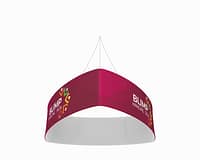In the realm of education, the ambiance of a learning environment plays a significant role in shaping students’ overall experience and engagement. One effective way to enhance these environments is through the use of fabric banners. These vibrant, versatile tools serve not just as decorative pieces but as essential components that can elevate educational settings. With the rise of visual learning, fabric banners have found their niche in classrooms, hallways, and auditoriums, creating spaces that inspire and motivate students.
Elevating Learning Environments with Fabric Banners
Fabric banners offer a unique approach to transforming educational spaces into vibrant learning environments. Their lightweight and flexible nature allows them to be easily hung, arranged, or changed, making them ideal for dynamic classroom settings. Schools can utilize these banners to showcase school spirit, celebrate achievements, or even display educational content. When strategically placed, they can draw attention to important themes or subjects, becoming focal points that stimulate curiosity and facilitate an enhanced learning atmosphere.
Moreover, the use of fabric banners in educational settings encourages a sense of community and belonging among students. When schools display banners that represent their values, achievements, and diversity, they create a visually engaging narrative that resonates with students. This collective visual identity fosters school pride and encourages students to participate more actively in their educational journey. In turn, this sense of belonging can lead to improved attendance, better academic performance, and heightened overall motivation.
In addition to aesthetics, fabric banners are a cost-effective solution for schools looking to improve their learning environments. Unlike traditional signage, fabric banners are often more affordable, reusable, and easy to maintain. This versatility means that schools can easily update their banners to reflect changing themes, seasons, or school events without incurring significant costs. By investing in fabric banners, educational institutions can create impactful visual stimuli that enhance their environments and support learning objectives.
Transforming Classrooms: The Power of Visual Communication
In an era where digital media predominates, classrooms must adapt to the changing landscape of communication. Fabric banners play an integral role in this transformation by serving as powerful tools for visual communication. They can effectively convey messages, highlight key concepts, or present information in a digestible format, catering to diverse learning styles among students. By harnessing the power of visuals, educators can make complex subjects more accessible and engaging, thereby enriching the learning experience.
Additionally, fabric banners can serve as a means of reinforcing classroom management strategies. For instance, displaying banners that outline classroom rules, expectations, or daily schedules creates a structured environment that helps students feel secure and focused. Visual aids can also support transitional moments in the classroom, guiding students through activities or signaling changes in routine. In this way, fabric banners not only enhance the aesthetic appeal of a classroom but also contribute to its functional effectiveness as a learning space.
Furthermore, fabric banners provide an opportunity for collaboration and creativity among students. Educators can involve students in the design and creation process of these banners, which fosters teamwork and ownership of their learning environment. By encouraging students to express themselves through visual art, schools can create a more inclusive and engaging atmosphere. This collaborative approach not only strengthens social bonds but also inspires students to take pride in their environment, leading to a more enriching educational experience overall.
In conclusion, fabric banners are much more than mere decorations in educational settings; they are vital tools that elevate learning environments and transform classrooms into hubs of visual communication. By enhancing aesthetics, fostering a sense of community, and promoting effective communication, fabric banners can significantly impact students’ learning experiences. As educational institutions continue to seek innovative ways to engage and inspire students, embracing the potential of fabric banners will undoubtedly contribute to a more vibrant and effective learning journey.



